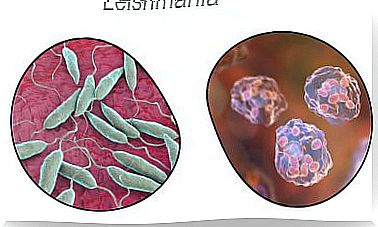Akureyri’s Disease
Akureyri’s disease predominates in young women, between the ages of 25 and 45.

Akureyri’s disease or chronic fatigue syndrome (CFS) is a complex condition that involves debilitating mental and physical fatigue, with no known cause and of chronic course.
The prevalence in the population is not known due to the difficult diagnosis of the condition, which from its origin has raised debates about its existence and its definitions.
It has been described under different nomenclatures throughout history, such as acute infectious encephalomyelitis, Iceland disease or Royal Free disease.
What is Akureyri’s disease?
As we have said, Akureyri’s disease is a complex and chronic disease characterized by the presence of intense and debilitating physical and mental fatigue. It is associated with general systemic, physical and neuropsychological manifestations.
It is said to be a lethargic encephalitis that spread in Europe after the First World War. As a sequel, it left a form of post-encephalic parkinsonism. Some claim that it is associated with the Spanish flu.
Clinic
The determining factor in this picture is the sudden onset of chronic fatigue. This term is understood to be the presence of great fatigue that makes it difficult to carry out a physical or mental activity, and that does not improve with rest.
To speak of chronic fatigue, it must be present for a prolonged period of time of at least 6 months. In the course of the pathology, different stages can be distinguished:
Acute episode

It usually appears in active people, during the course of a common illness or an episode of acute stress.
It appears to be related to infectious mononucleosis and other viral infections. The onset of fatigue is usually rapid, other symptoms are associated:
- First of all, cough.
- Also fever.
- Myalgia (muscle aches).
- Lastly, pain in swallowing.
After this episode, frank exhaustion persists, with an impact that limits previous activity and capacity by 50% (at least for 6 months). This leads to a persistent disability.
Set box
After the acute episode, chronic symptoms develop. Always associated with fatigue, the most common in Akureyri disease are:
- Pharyngitis.
- Also headache.
- Joint pain
- Alterations in body temperature.
- Finally, swollen glands.
Digestive symptoms such as diarrhea, abdominal pain, or anorexia are less common. There may also be an association with paresthesias or blurred vision. In addition, fatigue is often associated with sleep disturbances and other neurocognitive manifestations :
- First of all, ataxia and other psychomotor disorders.
- Also, failures in word processing and retrieval.
- On the other hand, disturbances in concentration, orientation or short-term memory.
- Finally, sensory and perceptual disorders: anxiety, hypersensitivity to noise, photophobia (annoying sensation associated with ambient light).
Evolution of the painting

The symptoms of chronic fatigue syndrome are permanent and intermittent. It is not reversed with rest or when recovering hours of sleep, but it also worsens with stress.
It can significantly limit an individual’s social and work life, which can lead to cognitive problems such as anxiety and depression. On the other hand, it can have a cyclical course, sometimes seasonal. In fact, each episode can be different, with few asymptomatic periods.
Akureyri disease diagnosis

The diagnosis of chronic fatigue syndrome is a diagnosis of exclusion. It is necessary to rule out other medical and psychiatric processes that produce the symptoms described. A good anamnesis that inquires about the form of the onset of fatigue and its duration is vitally important.
Remember that the beginning is usually abrupt. In addition, psychiatric disorders are common among the personal antecedents of patients.
The physical examination and the complementary tests can help to rule out other possible causes of the exhaustion that these patients report. On initial examination, the aforementioned symptoms may appear. Complementary tests usually include:
- First, blood counts.
- Also, viral serologies.
- Immune level tests.
- Finally, measurement of endocrine parameters.
Major psychiatric disorders should be excluded
Some disorders to rule out are alcoholism, obesity, or HIV infection. However, there are no decisive or diagnostic tests for this entity, it is based on a series of criteria and on the exclusion of organic or psychological pathologies that may cause the described symptoms.
Is there a cure today?
There is currently no curative treatment for Akureyri disease. The therapeutic approach is limited to improving the quality of life of patients.









